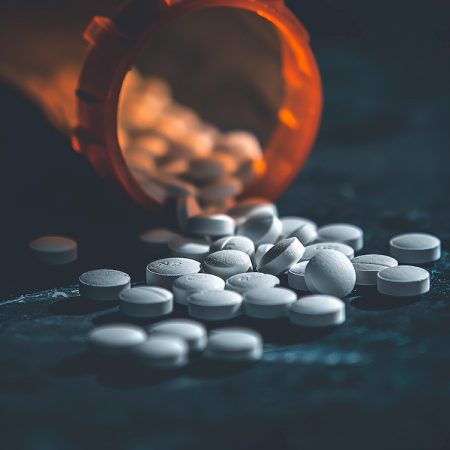The Science of Medically Supervised Detoxification
Sudden cessation of oxycodone triggers acute withdrawal symptoms within 8-12 hours due to abrupt μ-opioid receptor downregulation2. Withdrawal symptoms often include:
- Autonomic hyperactivity (tachycardia, hypertension)
- Muscle and joint pain
- Nausea and vomiting
- Fever and sweating
- Diarrhea
- Anxiety and irritability
- Pupillary dilation
- Restlessness and insomnia
Medical supervision is essential to manage these symptoms safely and prevent complications.
Three-Phase Assessment Protocol
Before detox begins, a comprehensive evaluation assesses:
- Biomedical factors: Liver/kidney function, polysubstance use history, chronic pain conditions
- Psychological profile: Co-occurring mental health disorders, trauma history
- Social determinants: Housing stability, legal status, family support systems3
Neuropharmacological Interventions
FDA-approved medications play a key role in managing oxycodone withdrawal:
- Buprenorphine: Partial agonist that reduces cravings while minimizing respiratory risks
- Methadone: Full agonist dispensed under federal regulations
- Adjuvant therapies: Clonidine for autonomic stabilization, NSAIDs for myalgia relief4
Oxycodone Detox Timeline
Withdrawal symptoms typically follow this timeline:
- Days 1-2: Onset of withdrawal symptoms, including nausea, muscle aches, cravings, headaches, and sweating.
- Days 3-5: Peak withdrawal period with severe discomfort, vomiting, shaking, and intense cravings.
- Days 6-7: Physical symptoms decline, but psychological symptoms like anxiety and depression may emerge.
- Days 8+: Post-acute withdrawal phase begins, with focus shifting toward long-term treatment and recovery.
While physical withdrawal subsides within 7-10 days, 58% of patients experience protracted withdrawal symptoms (PAWS) lasting 6-24 months5. These include mood instability, cognitive impairments, and sleep disturbances.
Comprehensive Addiction Treatment
Long-term recovery from oxycodone addiction requires an integrated treatment approach:
Medication-Assisted Treatment (MAT)
FDA-approved medications for opioid use disorder (MOUD) are used to support long-term recovery:
- Buprenorphine and Methadone: Reduce cravings and withdrawal severity
- Naltrexone: Blocks opioid effects and prevents relapse
Behavioral Therapy & Counseling
Therapeutic interventions help address the underlying psychological and behavioral factors of addiction:
- Cognitive Behavioral Therapy (CBT): Helps reframe negative thought patterns
- Motivational Interviewing (MI): Enhances commitment to sobriety
- 12-Step Facilitation: Supports structured, long-term recovery
Neuroplasticity-Based Approaches
Research highlights cognitive remediation therapy and mindfulness-based relapse prevention as effective in improving prefrontal cortex function and emotional regulation capacity7.
How Long Does Oxycodone Rehab Last?
According to NIDA, at least 90 days of structured treatment significantly improves recovery outcomes:
- 90-day programs increase abstinence rates by 37% compared to shorter programs
- Step-down approaches (residential → PHP → IOP) lower readmission risk by 42%
- Quarterly booster sessions help sustain recovery gains
Inpatient Treatment
Residential programs provide a structured, supportive environment, integrating:
- Individual and group therapy
- Medical and psychiatric support
- Recovery education and relapse prevention strategies
Public Health Implications
The CDC reports that access to MAT reduces overdose mortality by 51% in high-risk populations9. Ongoing research explores pharmacogenomic testing to optimize buprenorphine dosing and transcranial magnetic stimulation (TMS) for craving suppression.
Oxycodone addiction can feel overwhelming, but recovery is possible with the right support. At Still Detox, our medically supervised detox program provides round-the-clock care to ensure a safe and comfortable withdrawal process. Our expert clinicians use evidence-based treatments, including FDA-approved medications and personalized therapy plans, to help you regain control.
Don’t wait to seek help. Contact Still Detox today for a confidential consultation and learn how our comprehensive inpatient treatment can support your recovery.








